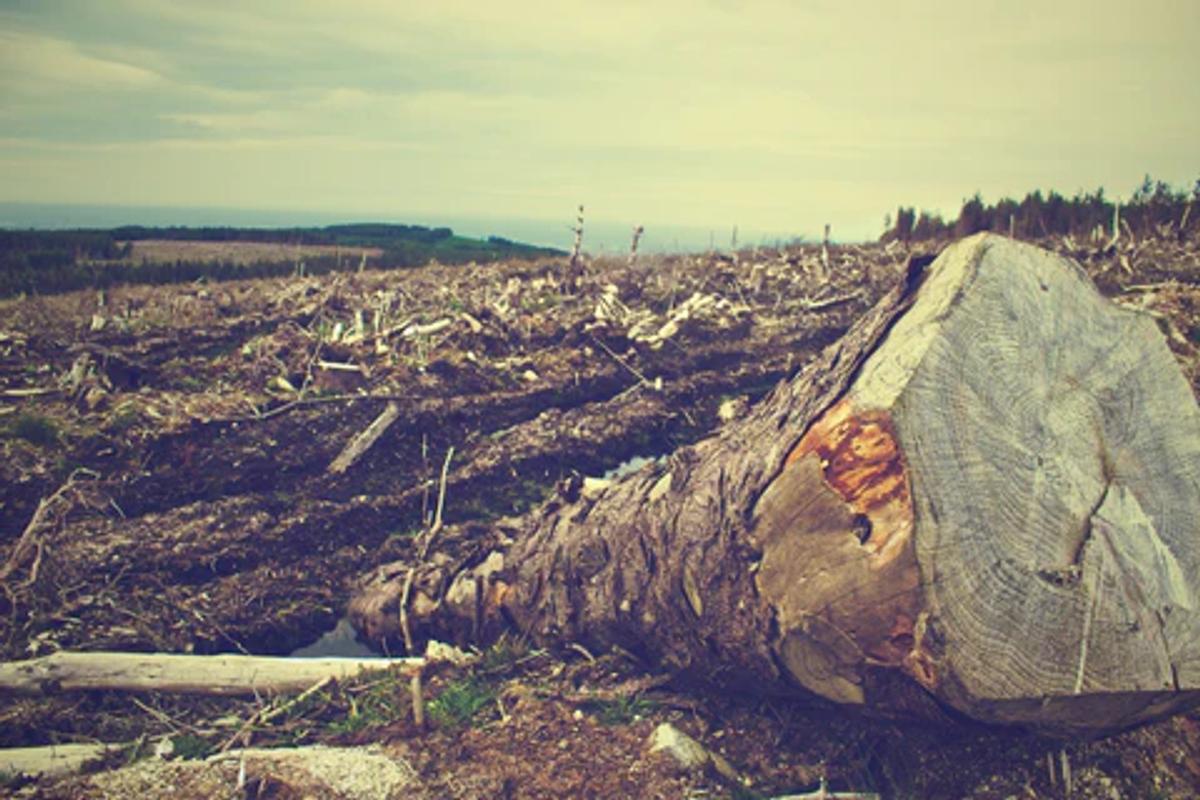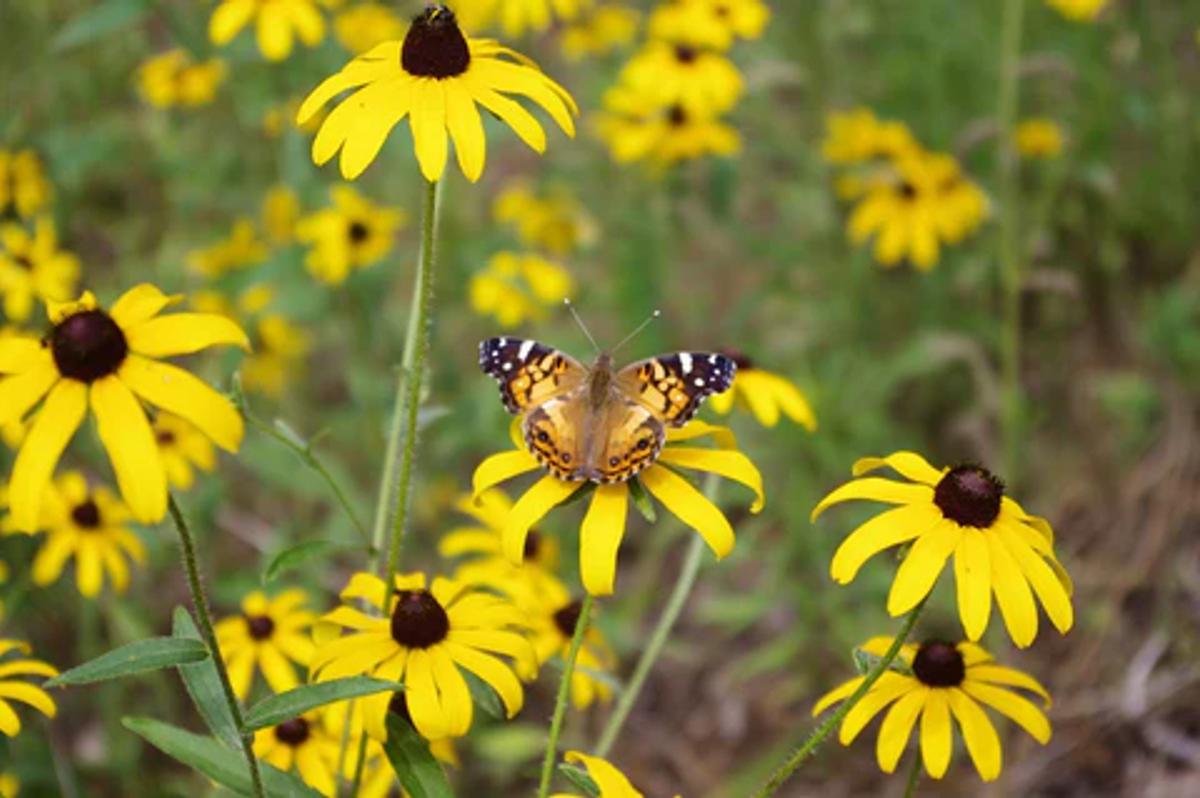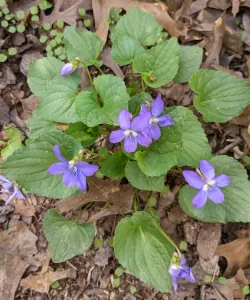Native Plants of North Dakota: 12 Stunning Species for Your Yard


Located toward the northern reaches of the Great Plains, North Dakota's landscape is dominated by grasslands and agriculture. The state is actually host to three distinct types of grasslands: shortgrass prairie, mixed-grass prairie and tallgrass prairie. North Dakota experiences a continental climate characterized by hot summers and very cold winters. These environmental conditions have shaped a resilient ecosystem and enabled the native plants in the region to endure these extremes.
If you live in North Dakota, we are excited to introduce you to some plants native to the Peace Garden State that could help your yard support local pollinators and other wildlife while providing some beauty for much of the growing season.
But before we dive in...
What are Native Plants?

North Dakota's native plants are those which have existed in the northern part of the Great Plains region for a very long time. Over thousands and thousands of years, these particular species have become especially well-adapted to North Dakota's climate and soils, and have come to provide essential food and shelter for the local wildlife, forming the foundation of the ecosystems we see across the state to this day.
Integrating North Dakota's native plants into your yard is a thoughtful way to create a sustainable and attractive outdoor space that doubles as a natural haven for butterflies, bees, and other beneficial wildlife. Further, opting to grow these plants can set your yard up to better withstand the region's seasonal shifts, while requiring less maintenance, watering and chemical applications to thrive.
Why are North Dakota Native Plant Species Important?

Habitat mismanagement is a leading driver of biodiversity loss worldwide.
As we describe on all of our state native plant blog posts, there has been an ongoing and incredible loss of animal life worldwide over the past 150 years. This is a tragedy that has affected almost every major group of wildlife, including the many bees, butterflies, birds and other beneficial pollinators that allow our natural world to function. A leading driver of this crash is land mismanagement: as humans, and especially on private land, we've often removed the native trees and herbaceous perennial plants which our local wildlife needs and have replaced them with non native species that do little or nothing to help.

In contrast, the trees, shrubs, grasses, and flowers that are native to specific areas are especially well-adapted to provide food sources and shelter for many beneficial insects, birds, and other wildlife. In the home yard, these plants also tend to cycle nutrients into the soil more efficiently and retain more storm water than any kind of turf or lawn grass. Many species of native plants can also survive in poor soils, and are drought tolerant and deer resistant once established, which also makes them a great choice for most gardeners. Simply by adding some native plants to our garden beds or other landscaping efforts, we can directly help to reduce atmospheric CO2, create fertile soil, and reestablish a healthy local ecosystem.
12 Plants Native to North Dakota for Outdoor Gardens
Below, I share just a handful of North Dakota native plants, and split them into two major groups based on sun exposure: Full Sun and Partial Shade. Each one of the plants listed will attract native bees, butterflies, and many other beneficial insects and wildlife; and all can be found in My Home Park's pre-designed gardens for North Dakota.
Native Plants for Full Sun

Swamp Milkweed, also known as marsh or pink milkweed, is a showy perennial that adds beauty to its surroundings with bright pink to magenta flowers which bloom gracefully from mid summer to early fall. This is a very easily grown species of milkweed which will do well in full sun and soils with medium to high moisture. Unlike some other species in the milkweed family, Swamp Milkweed is not a very aggressive spreader, making it a great choice for highly controlled or manicured pollinator gardens. Swamp Milkweed can grow up to 5 feet tall in ideal conditions and works wonderfully for accents and border planting. Among the many butterfly species and other pollinators this plant can support, the endangered Monarch Butterfly (Danaus plexippus) is likely the most famous. Monarchs rely on milkweed species such as Swamp Milkweed, Common Milkweed, and others, as the sole sources of food for their caterpillars.

Wild Bergamot, also known as bee balm, is a highly adaptable herbaceous perennial that is native to North Dakota and many other parts of North America. This aromatic plant belongs to the mint family and offers a delightful combination of aesthetic charm and practical benefits. Its beautiful pale purple flowers emerge from mid-summer to fall, attracting just about every pollinator around. Wild Bergamot is drought-tolerant and will grow well in most soil conditions. It normally reaches a modest height of 2 to 4 feet but can climb up to 5 feet or more if it's especially happy. Wild Bergamot is generally resistant to diseases, but can be susceptible to a mild leaf disease called powdery mildew - an issue that is rarely lethal to the plant but can affect its growth and appearance.

Big Bluestem is a warm-season perennial grass that can grow to about 5 to 8 feet tall, making it an imposing and robust addition to a larger yard. Big Bluestem gets its name in part from its unique foliage which transitions from bluish-green in summer to reddish-brown in fall. Big bluestem does best in slightly moist soils and full sun. While you may not necessarily want to invite them to your yard, Big Bluestem is a favorite source of food for many species of browsing animals, including American Bison. This species is also an amazing root system that can extend up to 10 feet below the surface of the soil, preventing erosion and enhancing soil stability.

Even though they look quite distinct from one another, Obedient Plant is actually a cousin of Wild Bergamot as a member of the mint family, Lamiaceae. In late summer to early fall, this plant erupts in a flurry of pink, lavender, or even white tubular flowers, reinvigorating yards just as the last of the late spring and mid-summer blooms fade. Growing to a height of about 2 to 4 feet, Obedient Plants prefer full sun and medium to moist, well-drained soil, though it's adaptable and can thrive in various conditions including partial shade. Its vigorous growth habit makes it a robust addition to perennial borders, wildflower gardens, or water edge plantings. Despite its name, Obedient Plant is a highly capable spreader, and will require some occasional management through division, deadheading, or by planting in contained areas. Beyond its ornamental appeal, Obedient Plant also supports local wildlife, offering nectar to hummingbirds, bees, and butterflies.

Cutleaf Coneflower, also known as Wild Golden Glow and Green Headed Coneflower, is a standout species among North Dakota's native flora. This gorgeous perennial joins other North Dakota natives, False Sunflower (Heliopsis helianthoides) and Common Sunflower (Helianthus annuus), in adding a warm and golden glow to any yard with its bright yellow flowers that appear from late summer to fall. Cutleaf Coneflower can reach up to 7 feet in height if truly happy - a feature that is either a reason to pursue or avoid this species depending on your preferences. Deadheading its flowers is highly recommended to increase the bloom time. Bees and butterflies are drawn towards its nectar-rich flowers and birds, like American Goldfinches, will snack on its seeds in the fall.

Along with Common Milkweed, Whorled Milkweed is found across much of North Dakota. Although perhaps not quite as immediately visually striking as its cousins, Swamp Milkweed or Butterfly Weed, its delicate, greenish white flowers remain a beautiful and intriguing addition to any yard that can support this important plant. Whorled Milkweed grows to a modest height of just about 1 to 2 feet and is tolerant of a variety soil types and moistures. Like the Swamp Milkweed we describe above, Whorled Milkweed also acts as a host to Monarch Butterflies which rely on them for their growth and survival.

Spotted Joe Pye Weed is an awesome choice if you are looking for a pollinator powerhouse plant with substantial height and a robust, striking appearance. This plant shoots up via tall, sometimes purple-spotted cane-like stems that can reach heights of up to 7 feet. The ends of these canes are adorned with dense clusters of mauve-pink flowers from late summer into early fall, and act as magnets for a wide range of pollinators, including butterflies, bees, and other beneficial insects. Spotted Joe Pye Weed will thrive in full sun to partial shade, and prefers moist, well-drained soils (though, like so many other native plants, its remarkably adaptable to a variety of garden conditions). It's particularly well-suited for rain gardens, pond edges, and other moist areas, where its towering presence and attractive foliage can create visually compelling backdrops or focal points. Beyond its aesthetic and ecological benefits, this plant is celebrated for its low maintenance requirements and resilience to pests and diseases.
Native Plants for Partial Shade

Though found in many wildflower seed packets and ostensibly native plant sales across the country, Anise Hyssop (also frequently called Lavender Hyssop) is actually native in the northern Great Plains, including across all of North Dakota and much of Wisconsin. Wherever found, this is a hardy perennial that will blend long-lasting beauty with functionality for your pollinator garden. Like so many other species, Anise Hyssop belongs to the mint family. As is familiar among many mints, its leaves emit a spicy, anise-like scent when rubbed. Spikes of lavender-blue to purple flowers emerge in mid summer to fall and attract heaps of pollinators. Anise Hyssop grows up to around 4 feet in height, is very adaptable and, once established, is quite drought tolerant.

Wood lily is one of the most attractive wildflowers of the Prairie landscape. Its six-petaled star shaped flowers emerge in the summers, displaying vibrant hues of pink, orange or deep red that add a very unique visual element. Apart from making a statement in a garden with its flowers, this plant also acts as an important food source for bees, butterflies and other pollinators. It grows about 1-3 feet tall and prefers well-draining soils with a mix of organic matter.

White snakeroot is a tall growing plant native to North Dakota that delights its onlookers with clusters of small white flowers. These flowers appear from late summer to fall and provide plenty of nectar and pollen to local pollinators. It grows well in full sun exposure but can also adapt to partial shade conditions. The plant grows 2-4 feet tall and prefers moist, well-draining soil.
Do note that snakeroot is considered highly toxic to pets and livestock. To play it safe, avoid planting it in areas where animals roam or graze. Labelling these plants can help prevent potential hazards as it is hardly recognizable and often confused with the non-poisonous Common Yarrow, during the non-flowering season.

Common Blue Violet is a charming native plant known for its blue-violet flowers that grace the landscape from spring through early summer. These delicate blooms rest upon heart-shaped, glossy green leaves that create a captivating color contrast to enhance the visual appeal of a garden. The plant has a low-growing habit with a modest height of 6-10 inches tall and can serve as an excellent ground cover. When planted in groups, its creeping stems interlock to form a lush green carpet to effectively suppress the weeds, making it a sustainable ground cover solution. It can perform well in a humus-rich, well-draining soil with average moisture levels. While part shade is preferred, the plant can also handle full sun exposure provided it gets sufficient moisture. Besides being a versatile addition for a native plant garden, blue violet also plays a key role in supporting local pollinators.

Wild Columbine or Eastern Columbine is a native herbacious perennial celebrated for its lantern-shaped blooms that gracefully dangle from the end of the stalks. These blooms emerge from spring through summer to offer an early feast of nectar to pollinators and come in an array of colors ranging from pinks to reds. The unique tubular shape of the flowers are specially designed for creatures with long mouthparts, such as butterflies, hawk moths and hummingbirds.
Wild Columbine grows to a height of 1-3 feet tall and is well-suited for any type of garden settings. It can thrive well in well-draining soil with medium moisture levels, and while it can tolerate full sun, dappled sun or partial shade offer the best growing conditions.
What You Can Do Today?

If you live in North Dakota, My Home Park has pre-designed gardens that bring together diverse sets of native plant species produced by expert, organic growers. These gardens are designed to bloom from early Spring to Fall, beautifying your landscape year round while supporting wildlife. Check out our catalog for North Dakota Area or in any of the other states we serve to get started today!
Share this article


